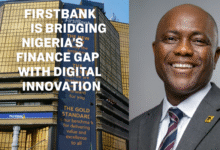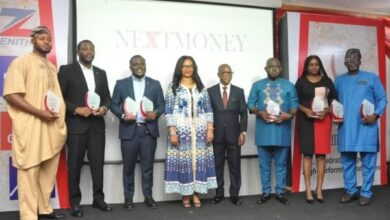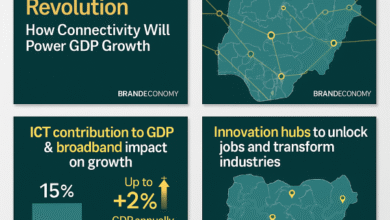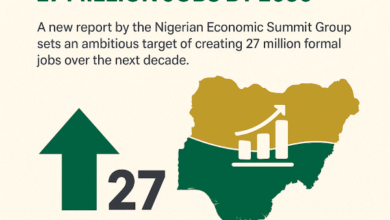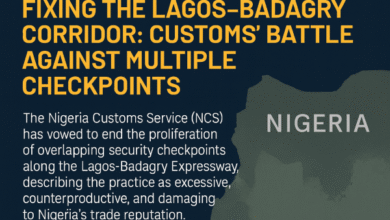Nigeria needs $100bn Investments Annually to Hit Middle-Income by 2050 – FG

Nigeria’s pathway to middle-income status by 2050 now has a hard number: at least $100 billion in investments annually. The $100bn Investments financing bar is what the federal government says must be cleared—every single year—to escape low-growth traps and deliver productivity-led prosperity.
The signal behind the number
At a high-level policy dialogue in Abuja, the Minister of Budget & National Planning, Sen. Atiku Bagudu, framed Nigeria Agenda 2050 as a practical—not utopian—plan. The administration’s “Renewed Hope” reforms, he argued, are rebuilding fiscal capacity and removing distortions. Early results: a jump in revenue-to-GDP from ~9% to ~16%, though still well below peers, and a commitment to keep tightening compliance and digitisation across tax and customs.
Why it matters
- Scale gap: Nigeria’s ~$36bn federal budget is small relative to ambition. Comparable federations deploy multiples of that—underscoring why private capital must do the heavy lifting.
- Time discipline: Agenda 2050 is carved into six medium-term (5-year) plans. Hitting yearly milestones is as important as the 2050 destination.
- Macro credibility: Sustained non-oil revenue growth, realistic FX management, and predictable policy are prerequisites for mobilising $100bn a year.
Anatomy of the $100bn Investments: What a workable mix looks like
To be investable, Nigeria must crowd in blended capital across four lanes:
- Public Capex & Reform Dividends
- Targeted federal/state capex in power, roads, rail, water, health/education.
- Deeper e-procurement, value-for-money audits, and faster project close-out to curb leakages.
- Targeted federal/state capex in power, roads, rail, water, health/education.
- Domestic Private Capital
- Banking & pensions: Lower-risk infrastructure notes, revenue-backed bonds, securitisations.
- Local equity/VC/PE: Real-sector scale-ups in agribusiness, manufacturing, logistics, housing.
- Banking & pensions: Lower-risk infrastructure notes, revenue-backed bonds, securitisations.
- Foreign Direct Investment
- Priority funnels: Gas industrialisation (LPG, CNG, midstream), renewables, mining with beneficiation, manufacturing SEZs, digital infrastructure.
- Investment treaties that balance protection with local-content and dispute-resolution clarity.
- Priority funnels: Gas industrialisation (LPG, CNG, midstream), renewables, mining with beneficiation, manufacturing SEZs, digital infrastructure.
- Concessional & DFI Blends
- AfDB/World Bank/IFC-style co-financing to de-risk first-loss tranches; guarantees for FX and policy risk.
- AfDB/World Bank/IFC-style co-financing to de-risk first-loss tranches; guarantees for FX and policy risk.
Policy stack investors want to see (and measure)
- Revenue reforms: Push non-oil revenue/GDP toward 18–20% without over-taxing the formal base; widen the net with smart compliance tech.
- FX & trade regime: Fewer exemptions, cleaner customs processes, and a transparent FX price discovery that narrows parallel-market gaps.
- Power compact: Bankable tariffs + targeted subsidies, DISCO performance contracts, and accelerated grid/off-grid investments.
- Justice & contracts: Faster commercial courts, enforceable judgments, ADR uptake, and reliable land titling.
- Labour & skills: Scaled TVET, STEM, and apprenticeship pipelines aligned to sectors with export potential.
- Subnational competitiveness: State-level SIPs (State Investment Promotion), industrial parks with plug-and-play utilities, and predictable taxes/levies.
Risks that can derail the $100bn Investments run-rate
- Policy whiplash: Retroactive rules, ambiguous executive orders, or surprise levies.
- FX illiquidity: Persistent backlogs that trap investor cashflows.
- Security & logistics costs: Corridor insecurity and port/road bottlenecks that kill margins.
- Arrears & budget execution: Slow payments to contractors, opaque cash-management.
BRANDECONOMY’s scorecard: what to track quarterly
- Gross capital formation/GDP and FDI inflows (trend vs. $100bn target).
- Non-oil revenue/GDP and FAAC stability to states.
- Project pipeline conversion: RfQ → award → financial close → disbursement.
- Power delivered (MWh), ATC&C loss reductions, and effective tariffs.
- Manufacturing exports and services (ICT/BPO) exports growth.
- Subnational reforms: Number of states with functioning one-stop investment centres and serviced industrial zones.
The politics of delivery: legislature–executive as a growth machine
Lawmakers and the executive must move in lockstep: realistic Medium-Term Expenditure Frameworks, cleaner Appropriation Acts, and rigorous oversight that prioritises completion over proliferation. Transparency in budget implementation—and timely payments to vendors—signal credibility to markets.
BRANDECONOMY Take
The $100bn figure is less a headline and more a discipline. Nigeria will not leap to middle-income status by wishing; it will compound its way there—through predictable rules, investable projects, and a relentless tilt toward productivity. If reforms keep lifting non-oil revenues, stabilising FX, and de-risking real-sector investment, the financing will follow. Miss those, and $100bn remains a talking point.
Bottom line: Make the rules bankable, the pipelines shovel-ready, and the cashflows measurable—then capital scales.


